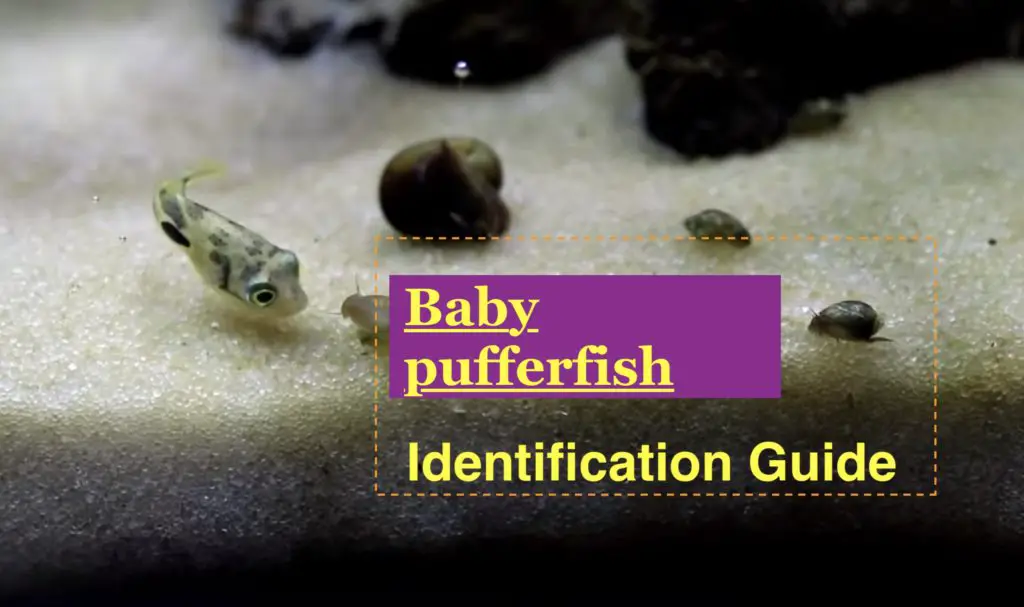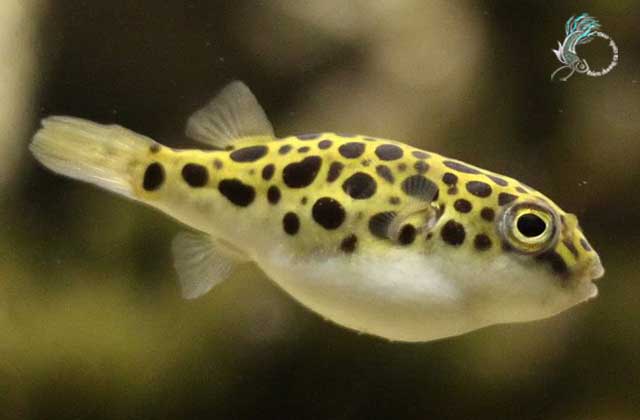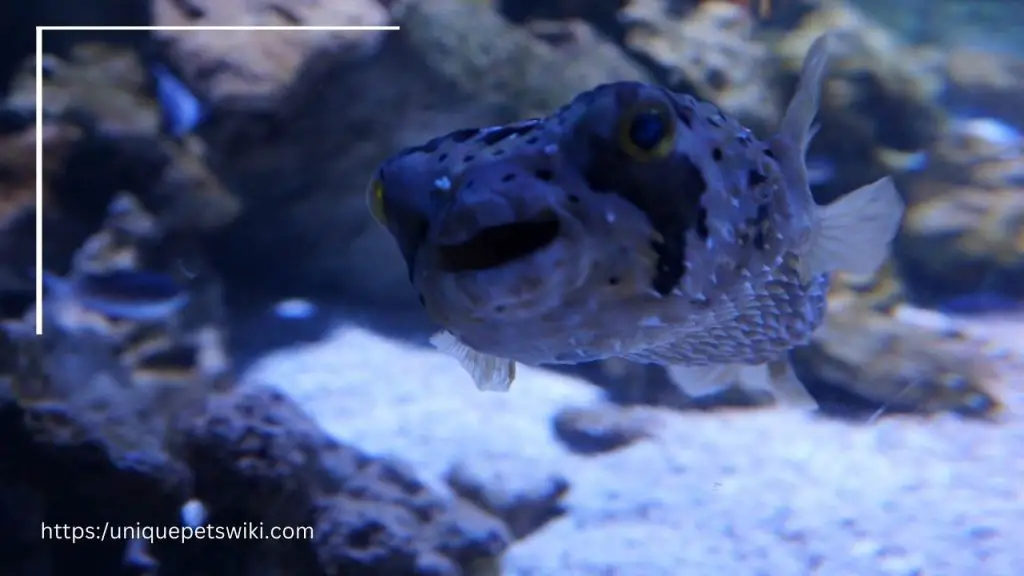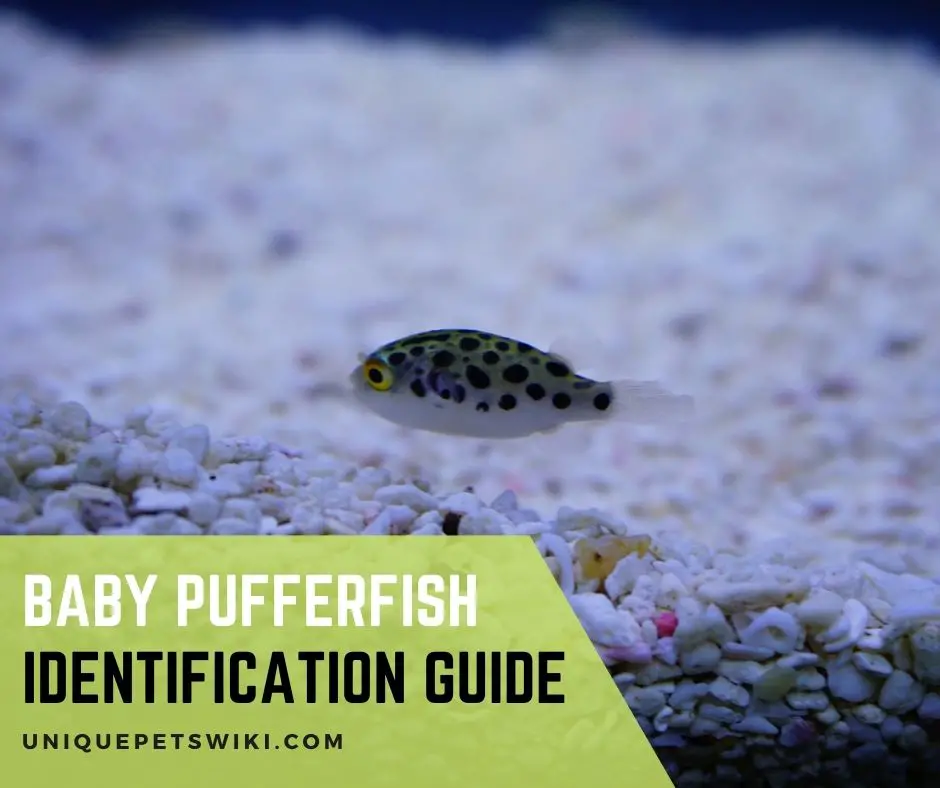Some fish species are very difficult to tell apart, especially when they are young. This can be the case with baby puffer fish. Puffer fish come in many different colors and patterns, making it hard to know which is which.
They have a comical appearance, and you will find over 120 species of pufferfish worldwide. Some of the ways to identify a baby pufferfish are listed below.

What do Baby puffer fish look like? Baby puffer fish look just like adult puffer fish but may not have the ability to puff yet.
Contents
What Are the Ways That You Can Identify a Baby Pufferfish?
- The most obvious way that you can identify a pufferfish is its shape. It has a long, tapered body with bulbous heads. Some species also have a wild markings on their body.
- They have a unique dentition. Pufferfish have four large teeth, two on the lower side and two on the upper side of the jaw, and this gives them a beaky appearance.
- Pufferfish skin does not have a scale but is usually rough to spiky skin to fend off predators.
- Is their belly inflatable? Not all baby pufferfish have the ability to puff at the early stage, but some do.
- Check out their fins. Pufferfish do not have ventral fins, while their dorsal and anal fins are usually without spines and located far back on the body.
Although, you will find these mind-blowing sea creatures gentle, slow, and magnificent when you first see them. They are known to be among the deadliest fishes when they are under threat. Pufferfish are toxic to predators and also poisonous to man; this means if you spot them while diving, try to give them some space. The best thing is that in captivity, they are mostly harmless because they cannot produce toxins themselves but through their diet.
Pufferfish are in abundance in the tropics, you will also spot them in the temperate zone, but they are not in the cold waters.

Baby Puffer Fish colors
Baby pufferfish look similar to adult pufferfish. They belong to the family of Tetraodontidae, which you can quickly identify with their unique dentition. It has four large teeth, which gives them a beaky appearance. Pufferfish also have an inflatable belly, which they puff to look larger when they are under threat to fend off predators. Their fins are also without spines, and they do not have ventral fins.
Puffer fishes come in varieties of colors such as grey, white, blue, brown, and yellow. You can easily use its color to differentiate a species of puffer from another. The dwarf pufferfish has varieties of colors which range from brown to green, with dark spots on their body. You can identify male dwarf pufferfish from the females with the dark lines found across their bellies and the wrinkles under their eyes.
The color of porcupine fish varies from light brown to tan, with darker brown blotches surrounding its body and black spots interspersed. A great way to identify a porcupine fish is its brown patch located above and below each eye.
Other Identifiers
Pufferfish are solitary, and their exact length is mainly on the type of pufferfish species. They are also known to be aggressive and territorial.
You are going to find the dwarf pufferfish only in freshwater bodies. Contrary to the solitary life of pufferfish species, they swim in schools. They can grow to about 2.5cm in length, which makes them the smallest pufferfish in the world. Although the freshwater puffers move in school, they are also aggressive and territorial.
You can quickly identify the porcupine pufferfish with its long, sturdy, and sharp spines. These spines are usually flat on their body surface, but it is straight out when it puffs up. The spines are known as modified scales.
Are Baby Puffer Fish Poisonous?
Baby pufferfish look as helpless as any other baby fish in appearance.
Its parents usually abandon it, and some do not have the ability to puff themselves when threatened.
Since pufferfish lays eggs, baby pufferfish do not have enough toxins in their body to protect themselves. An exciting thing about pufferfish is that the toxins are all over the surface of baby puffers. The mum puffer stores extra toxins where they keep their eggs and release some toxins as soon as she lays them. After the baby hatches, the toxins stick to their body. These toxins are not enough to kill predators but prevent them from being eaten.
Other Fishes That Resemble Puffer Fish
Although pufferfish have numerous distinctive features, you are also going to find varieties of fish species that look similar to them.
Some other fishes that resemble puffer fish include the porcupinefish, the triggerfish, and the filefish. All of these fish have a similar body shape to the puffer fish, and all of them can inflate their bodies by swallowing water.
Porcupinefish

The porcupinefish is the most similar to the puffer fish in terms of appearance, and it is often confused for a puffer fish. The triggerfish is another fish that can inflate its body, but it does not have the same round shape as the puffer fish. The filefish is the least similar to the puffer fish in terms of appearance, but it can still inflate its body when necessary.
Read more about porcupinefish.
Triggerfish
Pufferfish aren’t the only ones that can inflate their bodies with water! The triggerfish is another fish that has this ability. When triggerfish are threatened, they will gulp in water (or air) and puff up until they’re twice their normal size. This makes them very difficult for predators to swallow, and it also makes the triggerfish look much more intimidating.
Read more about triggerfish
Filefish
Filefish are a type of tropical fish that are closely related to triggerfish and pufferfish. Like its relatives, the filefish can inflate its body by swallowing water (or air). When it does this, the filefish’s body becomes very rigid and prickly. This makes the filefish much less attractive to predators, and it also makes the filefish look much larger than it actually is.
All of these fish are found in tropical waters around the world, and they all have the ability to inflate their bodies to defend themselves from predators. The puffer fish is the most well-known of these fish, but the others are also interesting and unique creatures.
